PS/SPS User Meeting
PS-SPS Users Meeting for Week 34 held on August 24th, 2023
The agenda for this meeting is based upon user schedule 1.8.0, please cf. here. Please note the current injector schedule which contains information about MDs, Technical stops, etc. and can be found here.
Next user meeting:
For week 35 on Thursday August 31st, 2023 10:30 CEST
Meeting room: 874/1-011 (CERN)
Week 36 : User meeting will be moved to Wednesday due to CERN holiday on Thursday (J.G.)
News from the PS & SPS Physics Coordinator (Barbara Holzer, Martin Jaekel, Dragoslav Laziz)
Thanks a lot to Martin Jaekel and Dragoslav Lazic for ensuring the Physics Coordination
PS and SPS Physics Coordination:
August 15 to August 20: Dragoslav Lazic
August 20 to August 23: Martin Jaekel
August 24 - August 31 : Barbara Holzer
September 1 - September 6 (16:00): Martin Jaekel
September 6 (16:00) - onwards: Barbara Holzer
- The Role of Deputy PS/SPS Physics Coordinator has been created.
- Martin Jaekel (EP-DT) has been nominated Deputy PS/SPS Physics Coordiator by the Director for Research and Computing, Joachim Mnich.
EURO-LABS TA:
Email to all requestors have been sent out, please wait for Martin Schwinzerl’s return for the replies to your inquiries.
Schedule version 1.8 is fairly similar to the version 1.7.1 except for the addition of LHCb + SND run in H8 and the parasitic HERD run in parallel to the CMS HGCAL run in H4.
News from the Facilities Operations Meeting (FOM) (M. Jäkel)
Dedicated MD this week Wednesday still unclear. HighRadMat has not taken data yet, and the MD migth need to be moved another week. Decision will be taken Tuesday late afternoon. Update Tue 14h : the MD will take place as HiRadMat has still problems. They will continue after the MD on Wednesday.
Ion beam commissioning in SPS, after HighRadMat has finished. To be rescheduled.
Preview of MDs:
Week 34:
- Dedicated SPS MD 9h-18h. Access to NA62 from 8h-9h.
- HighRadMat to continue after MD
Week 35 :
- Dedicated SPS MD: Extraction MD – beam going up to P42 (no access to ECN3 and TCC8).
- Par. Ion beam commissioning Thu & Fr
Week 36 :
- Tue & Wed - Dedicated Pb beam commissioning 08-20h
- Thu - Jeune Genevois / CERN holiday
Intensity split and wobbling
No wobbling changes requested
Intensities:
T2 = 50
T4 = 35 to 37 / target values is T10 = 22
T6 = 15 now, 50 on Monday
PS Machine Report (A. Lasheen)
- Reduced availability of 79.3% from Th-Th
- Broken RF bypass followed by vacuum leak
- Vacuum leak downstream of SS03, linked to breakage of RF bypass mounted on a vacuum flange
- Suspicion of breakage during very high intensity runs (MDs with high intensity LHC type beams and with fixed target beam at 3300e10 ppp)
- Two beam stops for access
- Monday and Wednesday morning, for injection septum water flow and repair of RF cavity gap relays (x2 cavities)
- Issues with barrier bucket in the PS
- Failures on the LLRF side requiring intervention of the LLRF piquet to restart equipment locally
- Ion commissioning
- First ions injected in the PS on Tuesday! Steering of the beam ongoing
SPS Machine Report (Carlo, Kevin)
- HiRadMat run. Experiment remodulated due to hardware issues.
- Expected to start today
- Adjustment of SFTPRO sharing as requested
- Dedicated MD on Wednesday TT24-P42 optics measurements
- Th-Th availability 77.6%
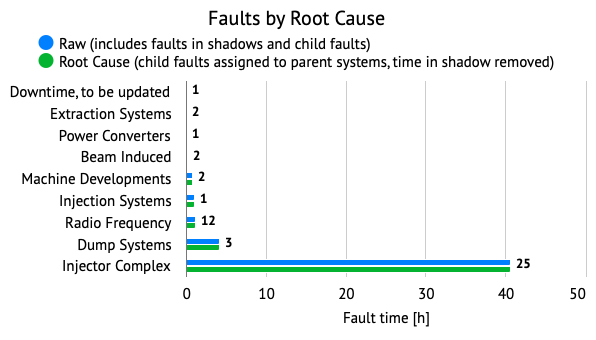
- Ions commissioning started - HW commissioning still needed and planned for today and Monday (14.4 s additional ions cycle)
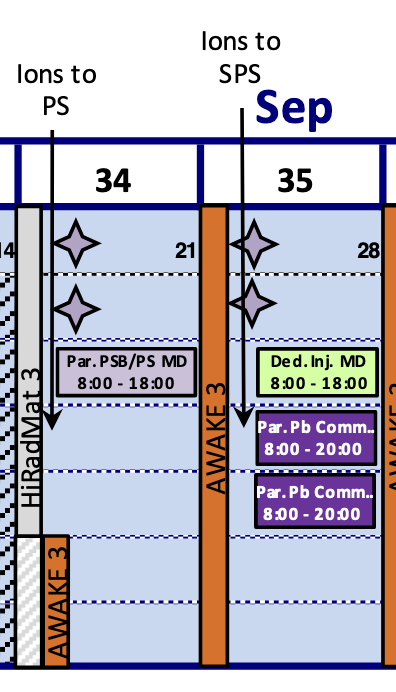
Safety / Radiation Protection (Alex Schouten)
- Reminder for general PPE compliance
- Regarding the discussion on external lighting during the night, attached a link to the document which will be used to request localised lighting in areas in need. If anyone has any additional comments, please contact James Devine. Link: https://edms.cern.ch/document/2910905/0.2
nToF (M. Bacak)
Physics progressing well:
- EAR1: 243Am(n,f) finished a 2 months long campaign, PPAC (n,cp) test mounted and taking physics data since yesterday
- EAR1-NEL: R2E with silicon & diamond for HE neutron calibration - preparation for potential XS measurement; MOSFETs for SEE
- EAR2: 26Al(n,a) & (n,p) ongoing
- NEAR: preparing new batch of dosimetry experiments
Protons excellent.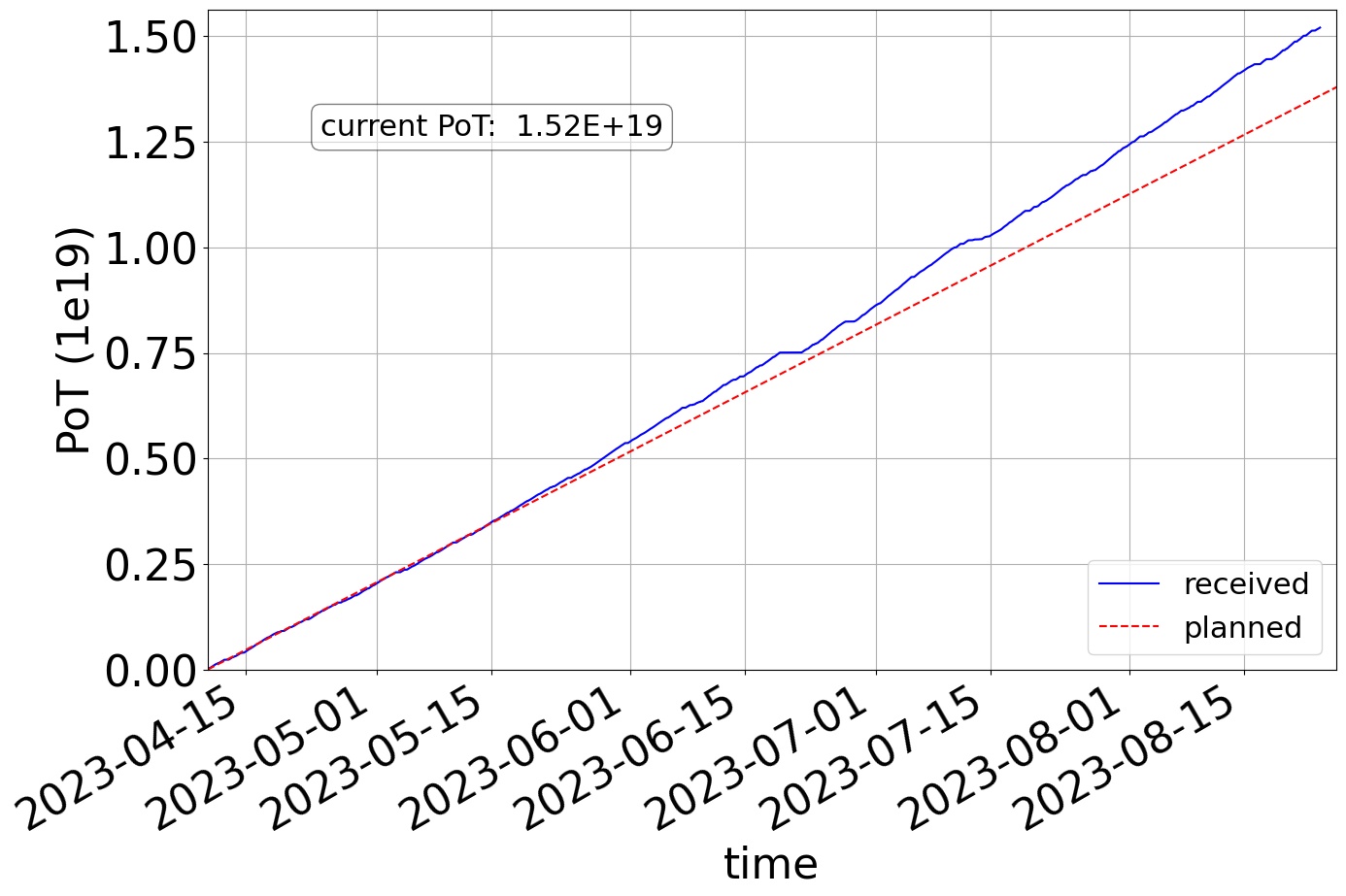
East Area Beam Status (Bastien Rae)
General : On Monday evening a water pump failure in building 355, pump P101. cut all magnets in EAST. piquet has to intervene for the pump. (~45min downtime)
T09: Smooth operation.
T10: good operation.
T11: No user.
East Area Users Tour de Table
T8 Main: IRRAD/CHARM (F. Ravotti)
Good week, no issue with operation. Weekly intensity level close to the target value (1.95e16 p/w, see plot below) lower of previos three weeks. Beam alignment and center on both X- and Y-axis, less good than previous weeks on both axes (number of spills centered within +/- 2mm): 78% [was 91%] on the horizontal and 89% on the vertical plane [was 97%] respectively.
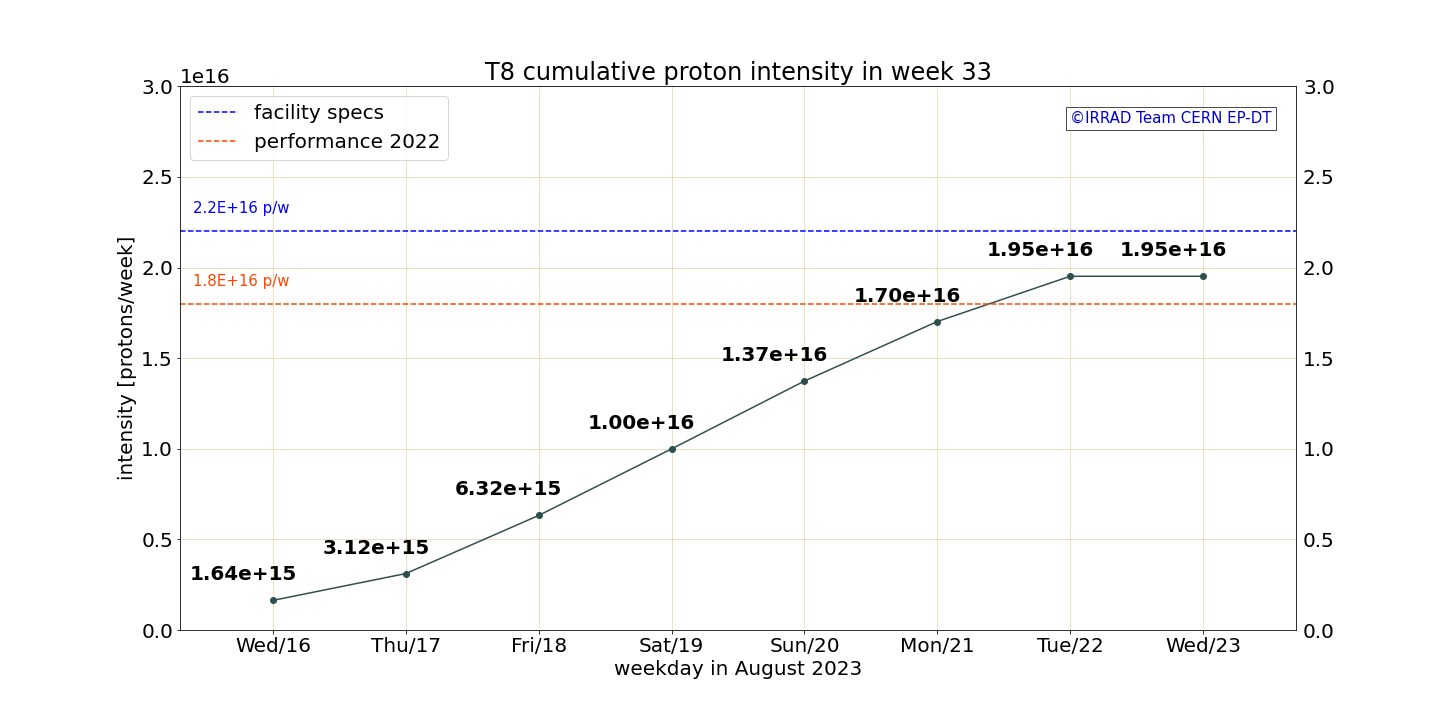
During the access on Wednesday, we exchanged the dosimetry and replaced samples for most of the long-term users: TE-MSC [including N2 experiment], ATLAS ITk Pixel [scanning table]. New experiments for SY-BI and CMS Pixel. In CHARM we modified BE-CEM and installed Cryogenics and BLM setups. Beam back at ~15:00, re-steering needed, good beam from 16:00 onwards.
Upcoming access, next week. In the afternoon when access is finished (and until late evening) CHIMERA/HEARTS ion MD with beam propagated downstream to T8. In the shadow of the access, East Area cooling pump intervention by EN/CV.
T9 Main: NP06 ENUBET (Francesco Terranova, Valerio Mascagna)
The ENUBET data taking is ongoing. We completed the installation of the apparatus on saturday. At the beginning of the data taking we experienced issues with the DAQ and, therefore, we tested the detector response using only two out of 16 electronics boards. This was enought to check the data reconstruction chain and ancillary detectors. Over the weekend we were able to acquire 8 boards and we positioned there to cover the first half of the detector. We thus
- calibrated the detector with mips (see figs)
- performed the energy scan at zero degrees
and we are currently performing the energy scan at 100 and 200 mrad. We thus plan to complete the basic measurements today and do the same measurements for the other half of the detector on Thu-Sat. We also plan a few special runs on Sun-Mon (pileup studies) to complete the data taking.
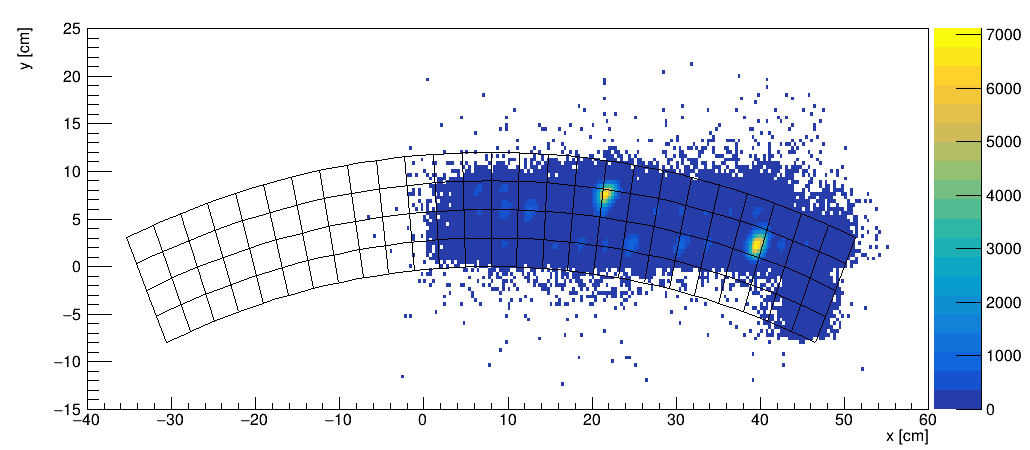
T9 Incoming: HERD - Week 35 (Nicola Mori)
The HERD collaboration will test a scaled-down prototype of the full apparatus. The main objectives will be to:
- calibrate each subdetector with muon MIP
- calibrate the response of the TRD with electrons of different energies
- study the energy resolution of the CALO for low-energy electrons
- verifying the general functioning of all the subsystems
Beam requests consist of high-energy (15 GeV?) muons and protons, and electrons ranging from the lowest to the highest possible energies.
Equipment requests include moving tables (DESY and XSCA already agreed), tables for ancillary equipment, a rack. We plan to make use of some of the beam line instrumentation, namely a scintillator and a Cherenkov detector for vetoing the pion triggers in electron beams (TTl output needed). A beam line survey has also already been arranged.
T10 Outgoing Main: ALICE ITS3 (Paolo Martinengo)
Measurement completed on Tuesday morning as planned.
Thanks a lot to Maarten for beam optimization.
T10 Main: EIC DRICH (Marco Contalbrigo)
The aim of the test is the performance study of a prototype for the dual-radiator ring-imaging Cherenkov detector at the future EIC.
We finished the installation yesterday afternoom and took the first data during the night. We are now preparing alternative beam configurations (focusing, energy, charge) and optimizing the setup.
The plan foreseen the comparative usage of various aerogel samples (different producer, refractive index, size) with and without the simultaneous imaging of the gas radiator.
T10 Incoming: MPGDCAL - Week 35 (Luigi Longo)
The MPGDCAL R&D focuses on the development of an hadronic calorimeter with micropattern gaseous detector as active layer.
The current technology under test are pad micromegas, µRWELL and RPWELL; a first test beam has been performed at SPS and a similar setup will be used for T10.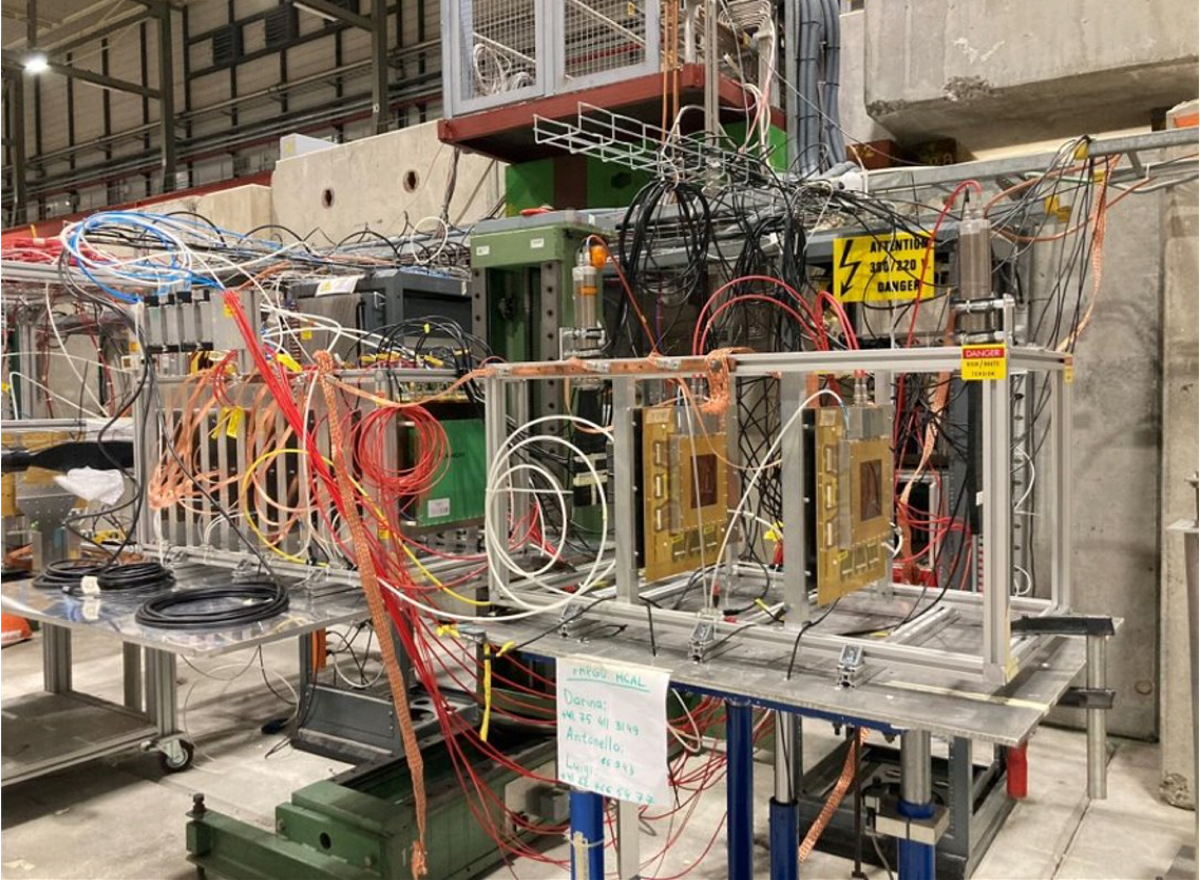
Setup: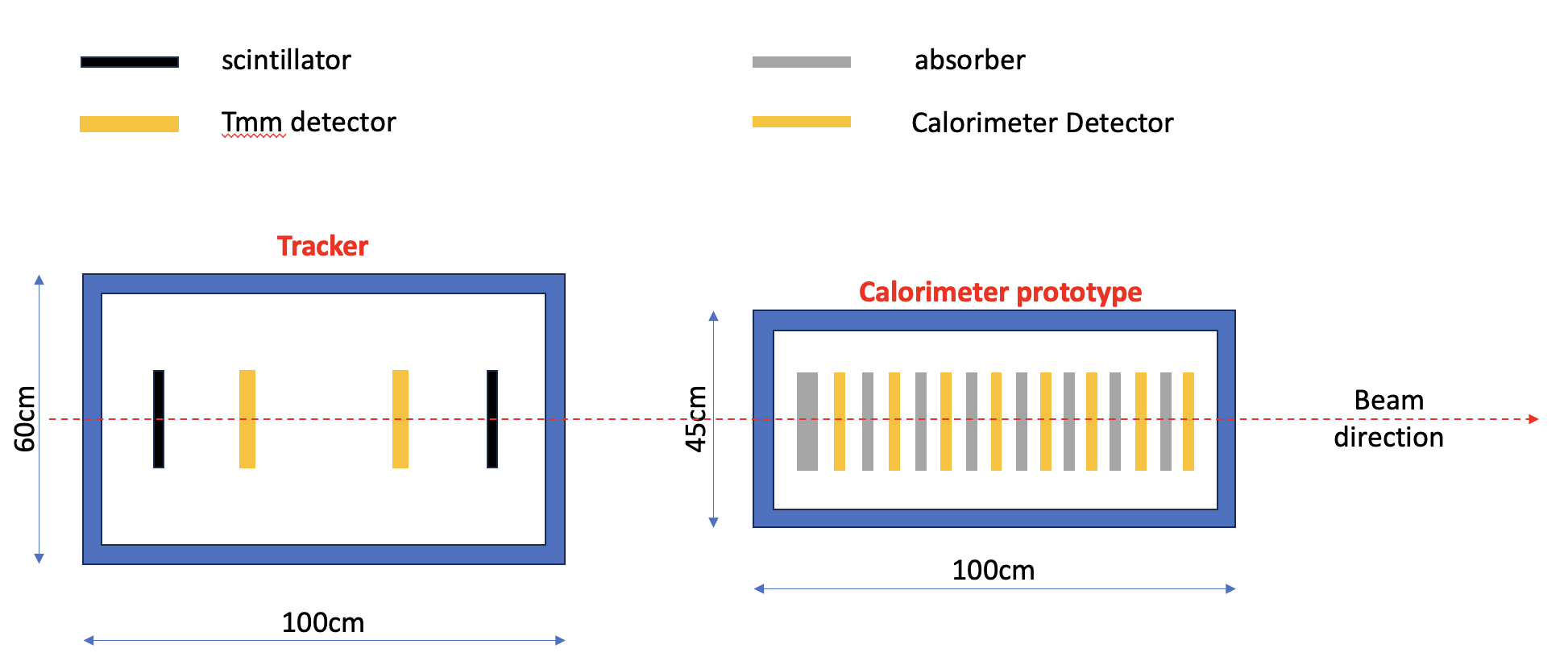
- At T10 we will have a tracker, made of 2 double coordinate micromegas and scintillators, plus a “calo structure”, where all the pad micromegas and µRWELL detectors will be hosted: iron slabs will be inserted between the calo structure to make a proper calorimeter prototype, after an initial test under pions.
- The calo structure will be placed on a motorized table, while the tracker on a manual table
- As in the SPS test beam, we will use 2 different gas mixtures Ar:CO2:CF4 45:15:40 for µRWELL and Ar:CO2:iC4H10 93:5:2 for Micromegas.
Tests:
- X&Y scan of the calo chambers with no iron slabs;
- once the iron slabs will be inserted, an energy scan from 2 to 8 GeV will be performed.
ISIEC submitted yesterday (ID: 1026); safety visit planned for 5pm.
Gas request already done (RQF2384312).
HiRadMat (N.Charitonidis)
Issues with the TPSG4 setup, many accesses necessary but a plan has been laid out for today.
AWAKE (G. Zevi Della Porta)
Expect to start the proton run on Saturday morning, after HiRadMat.
North Area Beam Status
Beamlines H2, H4, H6, H8 (Bastien Rae)
H2: Normal operation. Need ~2h without beam in EHN1 to perform the second part of the “cross talk” test between the lines Propose to do it on Tuesday morning (to be confirm by EPC)
H4: Issues with GOLIATH magnet current ramp-up, followed up by SY-EPC team
H6: No issues last week. Higher intensity week this week so PPE146 and PPE156 linked together (access and CESAR). Access system was changed on Wednesday morning and will change back next Wednesday.
H8: No issues, good operation.
Beamlines P42-K12 and M2 (Bastien Rae)
M2: Commissioning of MUonE setup planned with low intensity/no beam until Monday for which 15 units on T6 is ok. Final beam tuning to start on Monday with 50 units on T6.
P42/K12: Normal operation. Some issues with the MNP33 spectrometer magnet that will need to be followed up. Current oscillations seem to have gone after exchange of regulation card.
North Area Users Tour de Table
Beamlines P42-K12 and M2
K12-P42 Main: NA62 (Viacheslav Duk)
- Smooth operation during 17-24.08 with 22E11 at T10.
- spectrometer magnet MNP33 problems (BEND 101.196). 19-20.08: current oscillations. 22.08: current dropped to 0 for unknown reason, beam hit dowsntream detectors before taxes were closed. Fortunately no damage for NA62.
- Two fake fire alarms 22.08 at 9pm and 23.08 at 1am (air transperency sensor in the corridor). No beam stop.
- two accesses during the MD 23.08. Thanks a lot to Nikos for the coordination.
M2 Parallel, Incoming Main: MUONE (Please Add Your Name Here)
M2 Parallel, Incoming Parasitic: AMBER (Please Add Your Name Here)
H2
H2 Outgoing Main: HIKE SAC (M. Soldani)
Despite some data taking stops due to beam unavailability in NA, the amount of measurements and of interesting results we obtained exceeded our initial expectations, also owing to the prosperous 3-spill cycle that has been available during the nights and the weekend. More details on the results we obtained can be found in the slides on Indico. We thank a lot Nikos and Bastien for providing live support in the beam tuning at essentially all times.
H2 Main: LHCB ECAL (L. Martinazzoli)
Installation successfully completed. Safety visit done. Ongoing preliminary runs to commission the DAQ.
Thanks to Bastien and Nikos for the help setting up the beam.
Start of data taking expected this afternoon. First, planning to test time resolution of several different readout configurations of SpaCal with Tungsten absorber and Polystyrene scintillating fibres. Then (Monday), energy resolution of large-size SpaCal prototype.
H4
H4 Outgoing Main: FASER NU (Ken Ohashi)
- Thank you very much for providing beams tuned for emulsion detectors and operating the Goliath magnet.
- We had measurements using electron beams and muon beams untill Monday morning.
- Monday and Tuesday, we changed our set-up and had measurements using the Goliath magnet to understand the momentum spread of muon beams.
- Thanks to many helps from the Goliat magnet team, we finally had good measurements in Tuesday night.
- We cleaned the beam area in Wednesday morning.
H4 Parallel: GIF++ (Martin Jäkel)
Slightly reduced number of set-ups with ATLAS-MM and CMS-GEM already finished measurements last beam time.
List of userers participating : ATLAS-MPI, ATLAS-RPC (?), CMS-CSC (2 setups), CMS-RPC (2 setups), EP-DT2, RE21/CBM, RPC Ecogas. ATLAS-TGC migth join for week two if setup gets ready.
H4 Parallel: RD51 (Y. Tsipolitis)
5 Setups installed and running. Started early morning, very good swap with FAZER (thanks to FAZER team), remarkable work from Michael Lazzaroni’s teams (crane, tables and services). First week: mostly muons. One group leaving at the end. RP clearance to be organized.
Second week: Three groups coming, safety visit planned for Wednesday 30/9. Run with Goliath is planned for the second week in coordination with GIF++.
We also thank David Jaillet’s team for the prompt support for the flammable gas.
H6
H6 Outoging Main: ATLAS ITK PIXEL (Andre Rummler)
Extension of the cooling system for 3(4) quads worked well but took much longer than anticipated. We enccountered afterwards several other problems: connectivity; issues with one sample; desynch. Some data were taken with one quad DUT but only quite little and of unknown data quality.
H6 Main: MONOLITH (Lorenzo Paolozzi)
High-rate week with pion beam.
- Test of irradiated prototipes is complete.
- Starting test of small-pixel monolithic prototype in SiGe BiCMOS with the Geneva FEI4 telescope.
- At the end of the week we forsee a 8-hour run combined with EP PIXEL telescope.
H6 Parallel: EP PIXEL (Dominik Dannheim)
High-rate measurement programme for final test-beam week in 2023:
- Testing of new H2M monolithic pixel detector prototype (with DESY Tangerine group).
- FASTPIX parameter scans.
- Parameter scans for Timepix3 hybrid assemblies.
- Possibly further integration tests with MONOLITH assembly in our telescope (t.b.c.).
Smooth startup thanks to efficient beam tuning by Laurie. Reaching 5.5E6 / spill in scintillator 532 in H6B.
A/C in control room not working, someone from CCC already came to check, should be fixed by today.
H6 Incoming Main: ATLAS HGTD - Week 35 (Stefano Manzoni, Djamel Boumediene)
- Setting up in H6A starting on Wed 30 for one week
- Due to production delays with the ALTIROC3 modules, Week 36 won’t be used.
- ISIEC form submitted
- Main goal to test preproduction LGADs, typical target size: 2x2 mm^2
- Study LGAD performance (timing, efficiency, charge) by combining LGAD signal, MCP reference, telescope data
- Main tests planned at cold (-30 ºC) using the chiller from H6A
- Requirements: hadrons, typical beam size of ~1×1 cm^2, intensity of ~10^5 particles/spill
H6 Incoming Parallel: RD42 - Week 35 (Harris Kagan, Andrej Gorisek)
- Setting up on Wed August 30
- Testing new series of pCVD diamonds from II-VI coupled with Calypso ASIC version D with bug fixed with fibbing.
- ISIEC form will be submitted in next days
- Setup a standard one using Malta telescope and a DUT movable table for the DUTs
H6 Incoming Parallel: AIDA INNOVA WP6 - Week 35 (Please Add Your Name Here)
H8
H8 Outgoing Main: RE1 AMS L0 (Matteo Duranti - INFN Perugia)
Goal of the test: measure the spatial resolution of the first prototypes of the ~ 1m long microstrip silicon sensors we’re producing for the upgrade, on the International Space Station in 2025, of the AMS-02 apparatus. Two planes will be installed on the new “layer” (L0) to be installed on top of the apparatus: one is to measure the bending direction (given the uniform magnet) and one is at 45°

Beam Test setup:
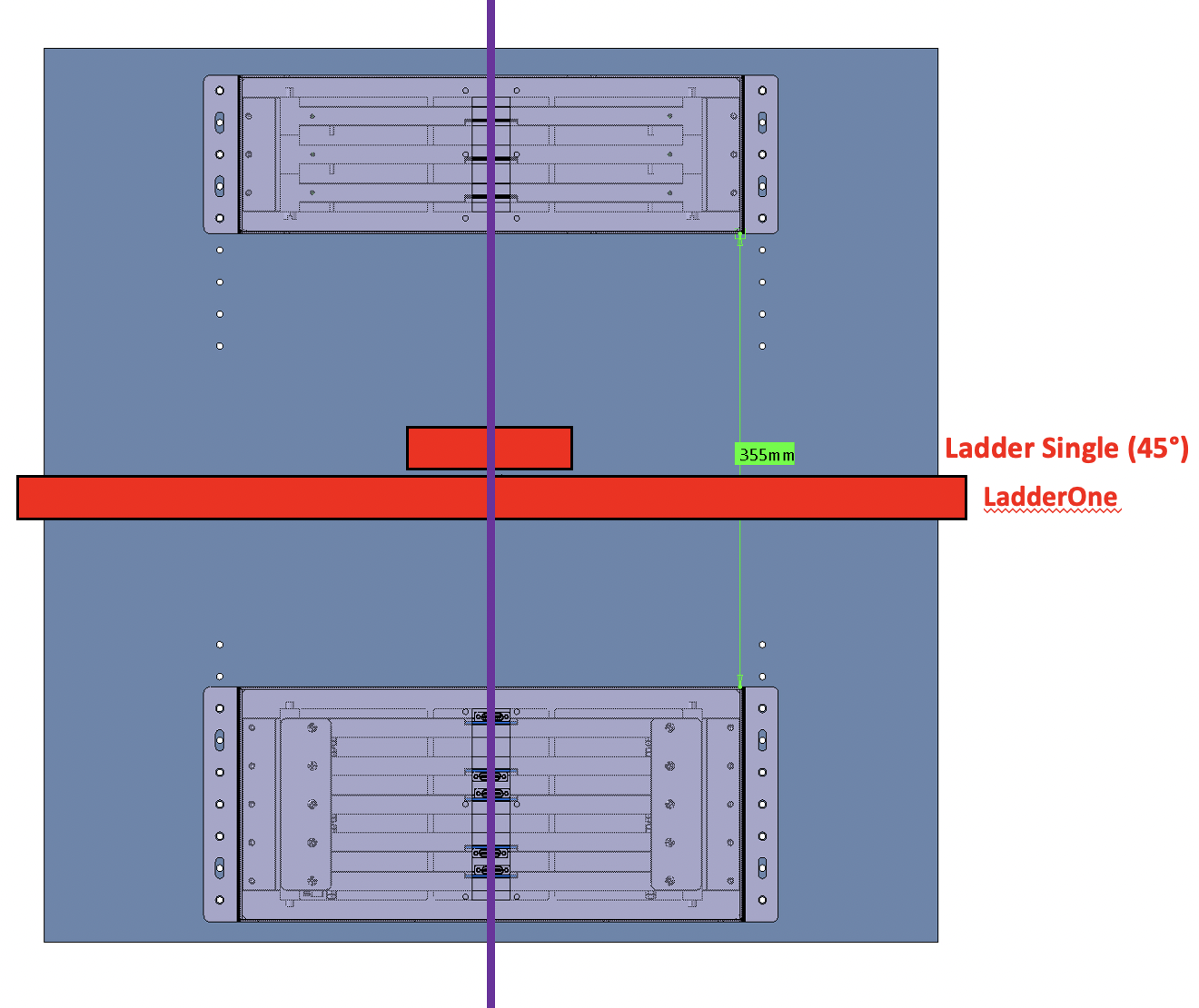
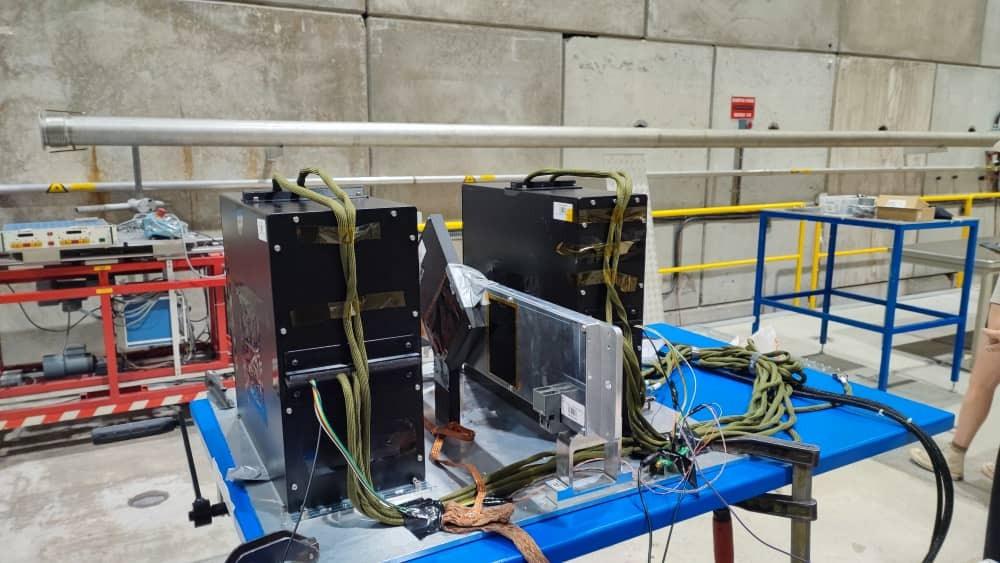
we were expecting 6 days ×
2 spills at 1kHz
we got 4 days ×
3 spills at 1kHz
Marteen gave a very good muon beam for us: very wide so to illuminate almost completely our 10 ×
10 cm^2 silicon sensors:
also the hadron beam was good, even if too narrow for us:
we collected more than 100 M triggers
we took all the data needed for the test program target:
trigger-to-hold scan (muons and hadrons)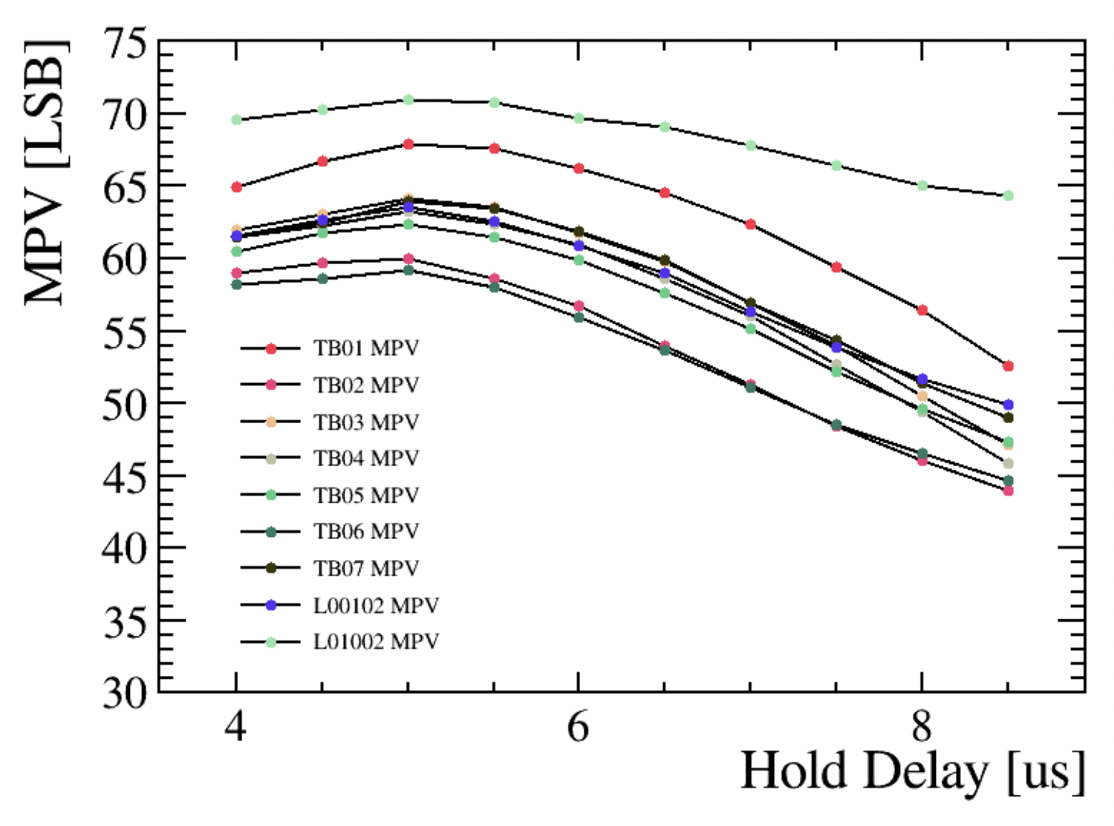
“orthogonal” runs on differents sensors of the 10 sensors (daisy-chain) long microstrip sensor for spatial resolution (data to be properly analyzed)
inclined (0°, 7.5°, 15°, 30° and 40° - beam entering one strip and exiting below another) runs
we had the opportunity to test additional thing:
- inclined (~ 30° - beam inclined along the lenght of the strip) runs
- different prototypes that we brought but were to test with low priority
- different arrangement of the sensors
See you in October!
H8 Main: LHCB (Loris Martinazzoli)
VELO TimePix4 team installed successfully in PPE 138.
1 week of beamtime scheduled. Standard 180GeV/c pion beam.
We would like some high-rate runs or wider beam. We are currently coordinating with the other users and the beam expert.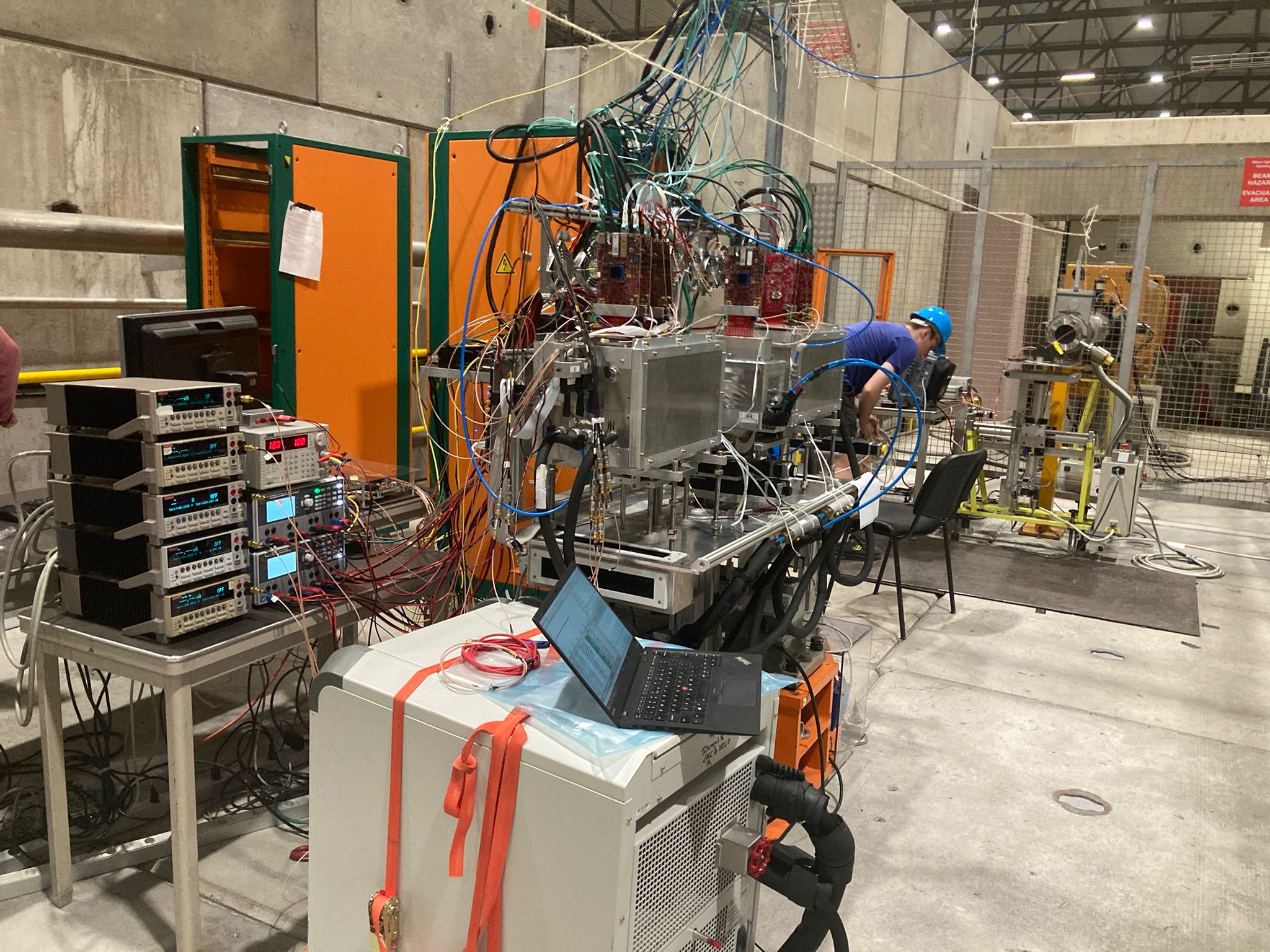
H8 Parallel: SELDOM (Nicola Neri)
Tracker installed successfully in PPE 128.
Characterization of bent crystals with 50 urad and 7000 urad bending angle. First crystal with 50 urad characterized successfully during first day of data taking (Thu 25 Aug). Continuing data taking to with 7000 urad crystals.
We would like low intensity and narrow beam. We will coordinate with LHCb (main user).
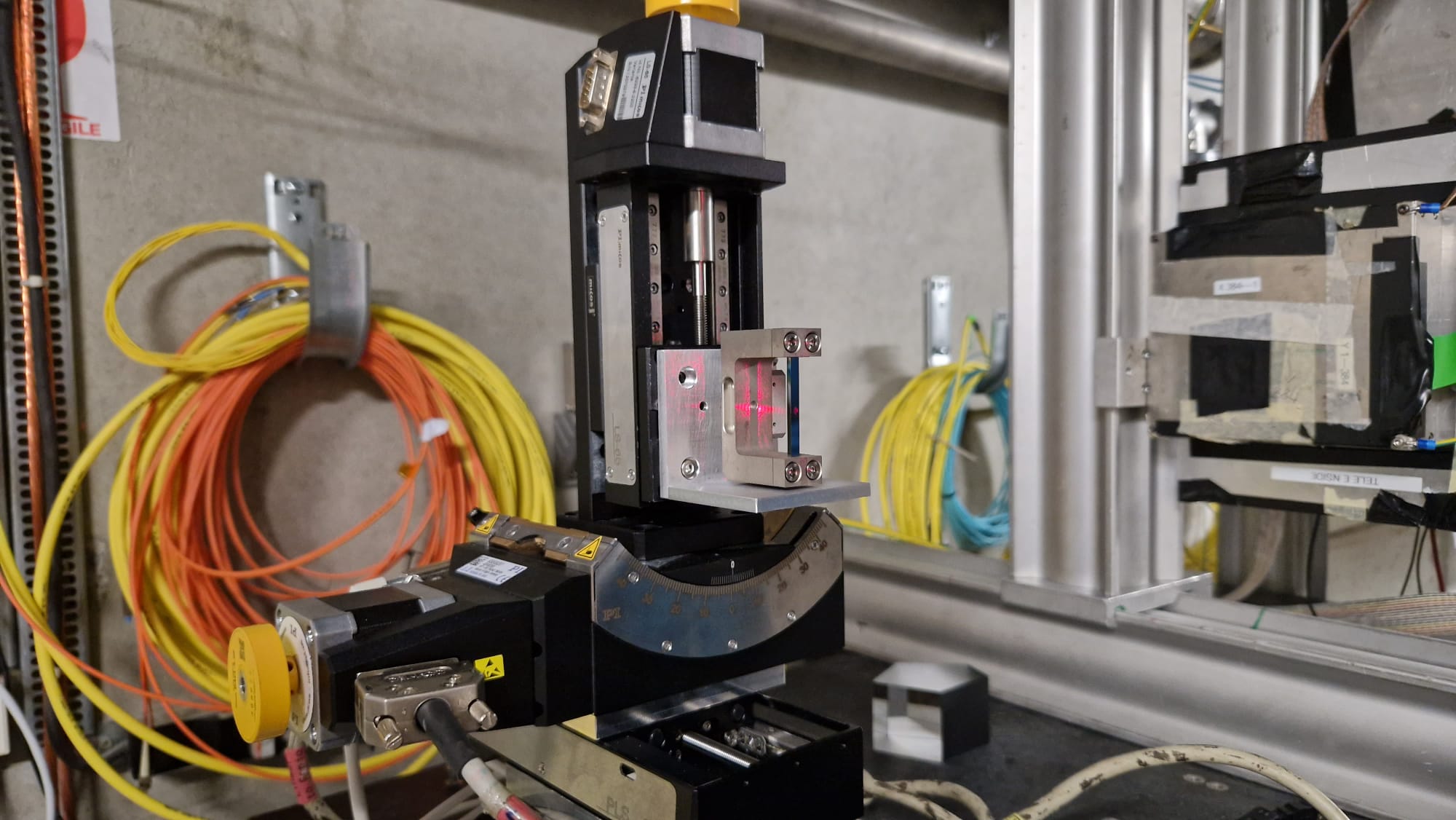

H8 Incoming Main: ATLAS TILECAL - Week 35 (Giulio Usai and Tigran Mkrtchyan)
We are ready to move the table back in the area on Wed. Fence removal already planned by Michael and Sylvain, in the morning.
ISIEC submitted yesterday. Apologies for the late submission.
The setup and installation of electronics is mostly completed.
We will use the same configuration as in the July run:
• 3 Cherenkovs (perhaps would be useful to evaluate a direct connection to our CR with a splitter on the PMT instead of the usual routing?)
Gas: helium the first week, change to CO2 second week.
• Trigger scintillators:
we have our two on the line we need the routing of (XSCI 042543 via the technical barrack)
We have dedicated cable routed from XSCI.042.403, XSCI.042.410 from last year, check connectivity.
• 2 Wire Chambers
“standard in 158”, and user operated Wire chamber downstream the Morpurgo. Not sure of the status.
• Vacuum chamber for electrons
Beam files as in the July Run. Some small tuning/test for electrons at 10 GeV is required and being discussed already with Maarteen and Anna.
(Motivations and more info at this link: presentation in the June 29 meeting: https://indico.cern.ch/event/1300895/contributions/5469992/subcontributions/432887/attachments/2675665/4639928/TileTB_plans_SPSUM_290623.pdf)
Parasitic Users
H8 Outgoing: CMS RPC (Please Add Your Name Here)
H8 Outgoing: STRAW TRACKER RD (Temur Enik, Katerina Kuznetsova)
- debugging of the prototype and electronics performance is done prior to the starting test beam period at H4
- yesterday were back to H4 zone 134 together with RD51, installed there, taking the data
- still would like to be back to H8 after the ongoing H4 datataking to continue the debugging (as well as CMS RPC)
H8 Outgoing: PAN (Daniil Sukhonos, UNIGE)
We have performed runs with 160 GeV/c muons at various angles wrt the beam (−10∘..10∘
). These runs are essential for position resolution studies due to homogenious illumunation of the whole detector surfaces (the beam was >5cm FWHM). We did tests investigating a higher rate capability (≈1.9kHz instead of ≈0.75kHz
) of data taking with our spectrometer. Tested the usage of an external clock provided to readout boards for hardware synchronisation. Overall, the beamtest was successful. We have taken huge amount of data due to the 3-spills per cycle mode available during the nights and weekend. Big thanks to SPS and North Area crew for being very helpful during our (de-)installation and measurements.
T9: EP 3DET (Please Add Your Name Here)
M2: AMBER (Please Add Your Name Here)
H4: STRAW TRACKER RD (Please Add Your Name Here)
H8: LHCb Plus SND (Ettore Zaffaroni, Federico Ronchetti)
We had a successful data taking week for several studies:
- Light yield of the LHCb fibre mat as a function of the position. Today we’ll replace the SiPMs to new ones and perform the same studies.
- Time resolution of the SND SciFi telescope as a function of front-end thresholds.
- Test of a new event builder software at low and high rate.
Plan for the coming days:
- Light yield of the LHCb fibre mat with new SiPMs
- Time resolution of a telescope module with thicker fibre mats
- Time resolution of a telescope module with new SiPMs